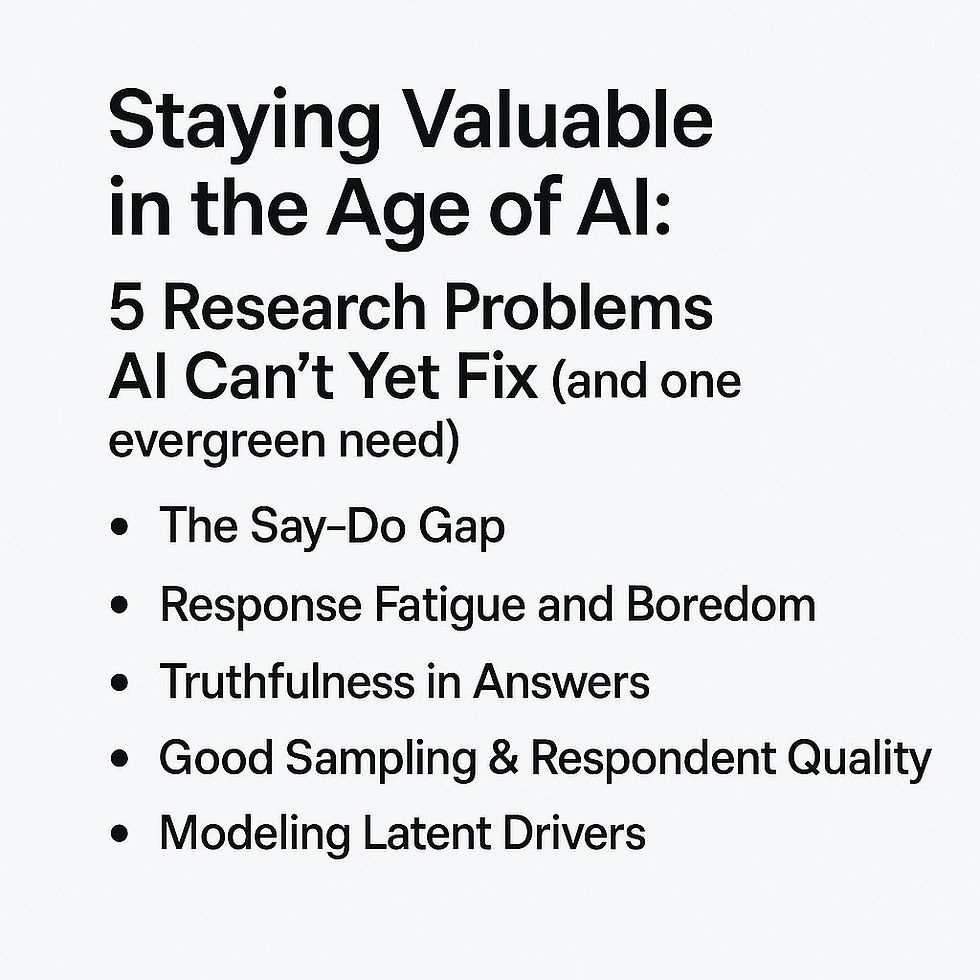The Power of the Preconscious
- Kevin K
- May 15, 2020
- 3 min read
Experts now tell us that 95% of our decisions are made at the unconscious level, and that most of our conscious thought has little impact on the outcome. So what keeps our conscious minds so busy? Apparently, justifying all of our unconscious choices...
This poses a tremendous challenge to brand managers and marketers, who understand that most people buy on emotion most of the time. However it poses an equally big challenge to market researchers: How do we measure unconscious thought so we can help our brands and products communicate their real value? Most surveys don't even try to do this - they literally measure the tip of the iceberg of consumer decision making. Moreover, those tools and technologies that do try are expensive, hard to use in the real world, or just don't work that well. I remember when fMRI (functional magnetic resonance imaging) was the next hot technology, but the cost was insanely high per respondent, the measurements were crude, and it wasn't exactly something your brand users could do in their living room.

There's some good news, however. A lot of what we want to measure as market researchers is not buried in what psychologists call the "deep unconscious." That's a pretty scary place indeed, and something that we often want to stay away from. Fortunately, psychologists have long recognized a large area of the unconscious that is just below the surface, which they call the preconscious. This is the area where thoughts actually form and take shape, and is increasingly a topic of research among cognitive scientists.
Understanding how the preconscious works - how various stimuli activate regions of our minds to trigger memories and organize them into thoughts - has the potential to revolutionize how we do market research. The fantastic thing about the preconscious is that we can access it without hooking patients up to giant fMRI machines. In fact, we can often access the preconscious simply by changing how we ask questions and gather responses.
Indeed, asking creative questions to measure preconscious thought is at the foundation of another huge body of research that we now call behavioral economics. We can think of behavioral economics as the practical combination of economics and clinical psychology. One of the simplest observations among this body of work is expressed in Kahneman's book Thinking Fast and Slow, which should be mandatory reading for anyone in market research these days. Essentially, we have two decision making mechanisms: fast (System 1) and slow (System 2). System 1 is really good at making fast decisions most of the time, but also suffers from a huge list of biases because it relies of "heuristics" (or simplifying rules).
For years, market researchers have known about these biases because we've seen them in our surveys. However, we've viewed them as insolvable problems that we just have to live with. But what if we thought about this differently? What if we looked at the massive number of cognitive biases that has been identified by behavioral economics and cognitive scientists as opportunities to create consumer interactions to help us understand how people really think and feel?
This insight lies at the root of everything we do at Intuify. Our technologies, from our mobile interfaces to our unique methodologies and AI tools, are all focused on tapping into preconscious thought using a wide variety of tools and techniques. Some of these are patent-pending, and some are simple rules and strategies, but all of them can be deployed without special laboratory equipment or expensive setups. That is our mission: to tap into the deep insights available through accessing preconscious thought, and to do it at scale.



Як можна зараз багато де почути, що наш світ не може без новин, а людина не може без усвідолення ясностні своїх дій, то це суцільна правда, бо саме завдяки новинам, ми можемо дізнаватися більше, а також більш чіткіше усвідомлювати, що саме відбувається в світі навколо. Я дуже радий, що можу використовувати новинний портал Delo.ua, котрий неаби як змінив моє життя, бо до нього, я навіть подумати не міг, що може бути таке різномаїття інформації. Завдяки ним, я зміг більше дізнатися про крипто-світ, а також про біткоїн https://delo.ua/tags/bitkoin/, що досить таки сильно змінило моє уявлення про те, як все працює. Загалом, я дуже радий тому, що користуюся саме їх порталом новин, бо вони довели своєю працею та якістю, що саме вони…